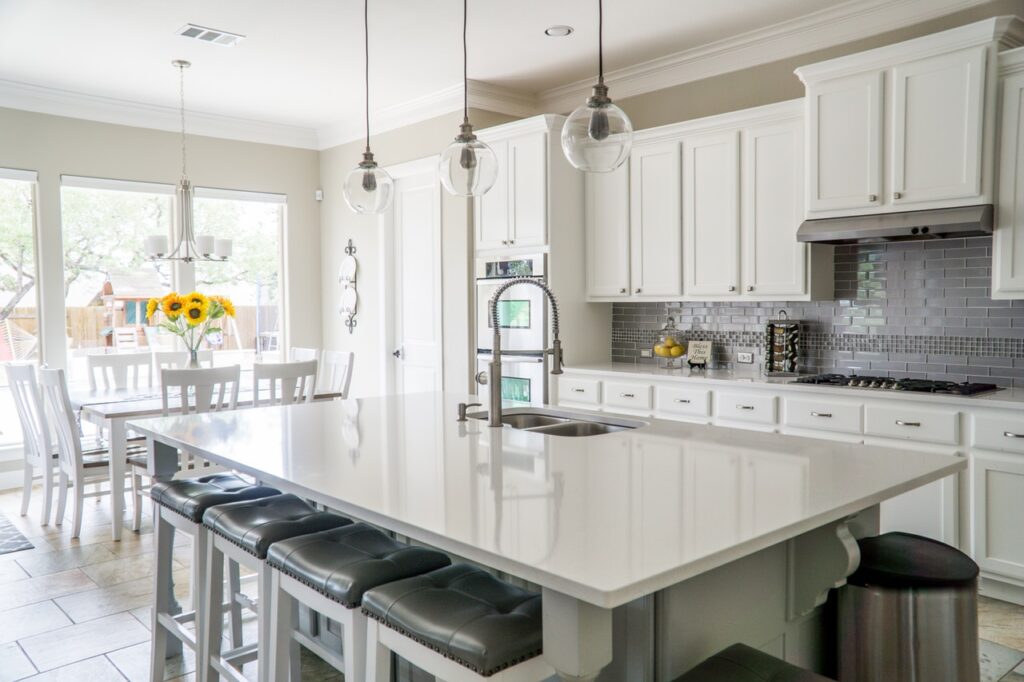The time has come to consider the renovation of your home. One of the most important steps to take is the budget. Some would say it is the most important. But, a poor contractor or bad schedule can drain a budget just as easily as overspending on a fixture.

Budgeting a Home Renovation
Developing a budget is easy, right? We decide how much we can afford and work from there. Except…, how to know what things cost? Is the budget realistic? The best approach is to determine the budget and priorities together. But don’t just focus on what looks good. Design trends change. If, after the renovating, you plan to sell your home in 5, 7 or 10 years, try to remember that the design will play a small role in how the house is valued for a listing price. Consider that your renovation may include making changes to roof, windows or exterior doors. A new roof and windows will help tremendously at resale as these go into appraising the house. Equally, updating plumbing, electrical and heating or cooling systems will also help the valuation of the house. So, as you’re budgeting your renovation and considering priorities – keep in mind how you want to increase the value of your home while equally increasing how you want to live in as well as enjoy the time living in it.
Need a quick budgeting tool? Try this: https://www.remodelingcalculator.org/
Planning the Home Renovation
With your priorities set and a general budget established, it’s time to outline your plan. The work to be done, by whom and when. If you have do-it-yourself initiative and skills, this will need to be factored into areas that you contract out. Keep in mind, regardless of who does the work, it is best to determine where you need permits (e.g. electrical). If the town doesn’t know you did the work, this can affect you when you decide to sell the home. Non-permitted renovation work can cause a buyer to back out of a deal simply because of the uncertainty of the quality of work. Or, more importantly, if it was done to town building codes.

Creating the Work Plan
As you put together your budget, priorities and possible work plan – now is the time to bring in contractors (for the work you’re not going to do). Between trips to your favorite home improvement store and shopping online for fixtures, you also need to interview contractors. Find out what they will estimate for the work you outlined and when you need it done by. We recommend that you interview at least two, preferably three, contractors. This is how we work as well. Regardless of our network of contractors, we are always evaluating groups for quality of work, pricing, job site cleanliness, timeliness, etc. You will need to do the same. Additionally, you should consider agreements in writing to confirm the estimate as well as the schedule of payments and what criteria will be used to mutually agree to the work being completed and fully paid. The last thing you want is a contractor placing a ‘mechanic’s’ lien on your house because of a debt dispute on the work performed.

Now that you have your budget done, priorities outlined, work plan outlined, selected contractors and pulled permits – the fun part begins. Putting the designs and ideas in motion. The fun part is the demolition portion, but as soon as that first wall gets a hole in it – the real work begins. But hey, this is why we do renovations. To go from something old to something new is always fun. Whether it’s a simple kitchen redesign or a full gut job renovation, these are the projects that test us and satisfy us at the same time.
Getting into the Home Renovation Design
We will dive deeper into the renovation planning portion in a later blog post. First, focus on establishing the budget and priorities. Everything will flow much better once these are set. There will be plenty of time for the paint choices, cabinet styles, fixtures, drawer knobs, tile selections, etc.
If you have questions, please feel free to reach out. We’re happy to help.
Planning a renovation but (now) rethinking it? Contact us, maybe it is something we will take over for you.
Thanks,
g.
